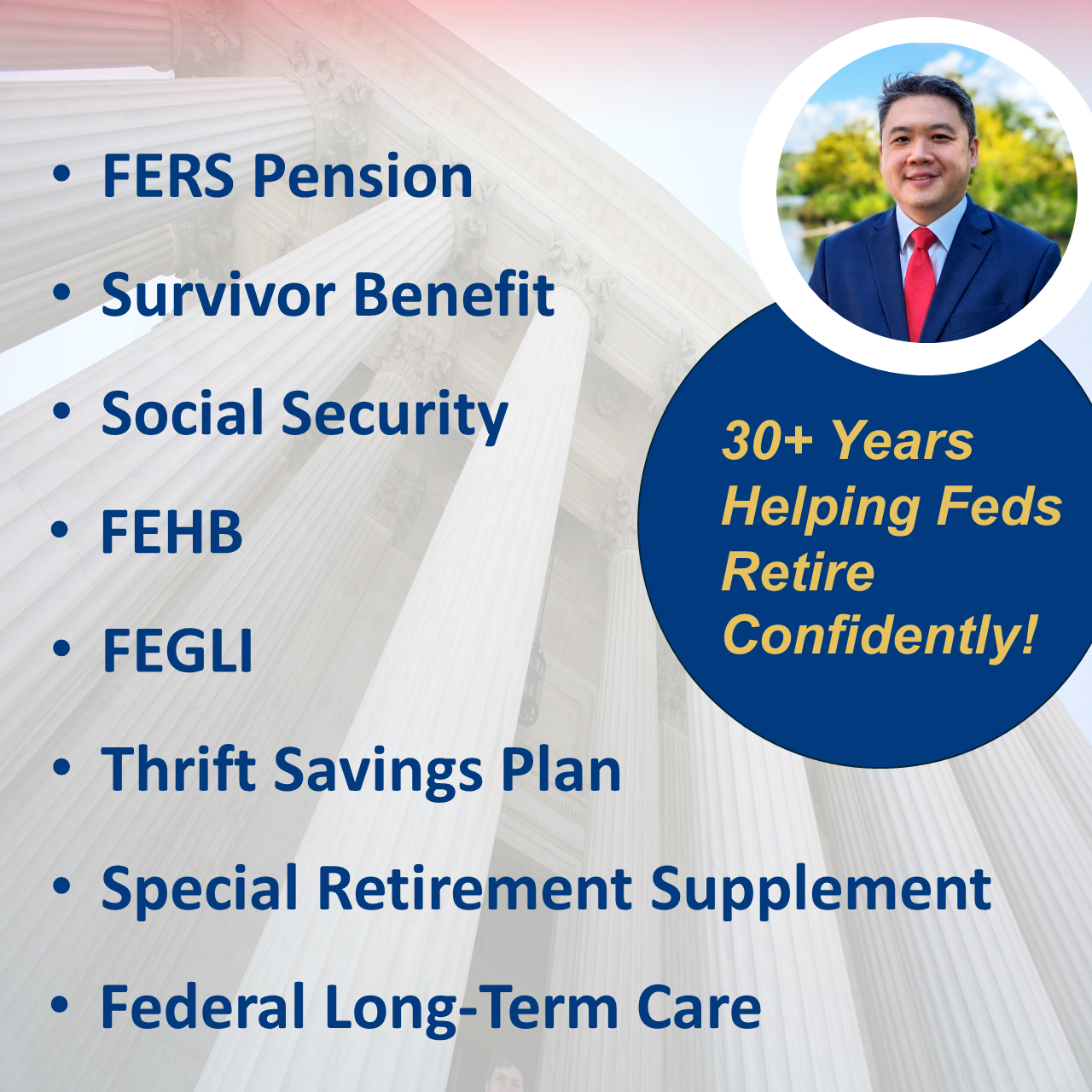Maximize Your Agency’s TSP Match: Don’t Leave Free Money Behind
For many federal employees nearing retirement, few opportunities are as valuable as making the most of the government’s Thrift Savings Plan (TSP) match. As you approach the next phase of life, every dollar of additional retirement savings becomes all the more essential. A TSP match effectively doubles a portion of your contributions—turning what you set aside into an even greater sum for your future. In other words, you could be leaving free money on the table if you’re not contributing enough. Learn more about how TSP matching supercharges your retirement savings.
Why the TSP Match Matters for Federal Employees
Retirement planning is already challenging, and federal retirement benefits can feel more complex than typical private-sector 401(k) plans. But one of the key perks for Federal Employees Retirement System (FERS) participants is the TSP match. With this match, your agency will add to your account above and beyond your own contributions, effectively boosting your retirement savings without any extra effort on your part.
Think of the TSP match as a rare instance in finance where you’re guaranteed a return on each dollar you contribute. By not contributing at least enough to capture the full match, you may be missing out on thousands of dollars over time. Many federal employees nearing retirement ask, “Why is TSP match such a big deal?” The short answer: it’s free money. Understanding how this match works and taking steps to ensure you receive the maximum possible amount is crucial to strengthening your retirement prospects.
Understanding TSP Matching Contributions
Federal employees under FERS have access to a powerful matching structure. First, there’s an automatic 1% contribution that your agency deposits into your TSP even if you personally contribute nothing. Beyond that, if you contribute at least 5% of your own salary, you’ll receive an agency match that amounts to an additional 4% of your salary, bringing your total agency contribution to 5%.
The breakdown looks like this:
| Contribution | Agency Match Percentage | Notes/Explanation |
|---|---|---|
| 1% Automatic | 1% (given automatically) | Provided regardless of your own contributions |
| First 3% | Dollar-for-dollar | Matched 100% on the first 3% you contribute |
| Next 2% | 50 cents on the dollar | 50% match on the next 2% contributed |
This means that if you contribute 5% of your salary, you’re essentially saving 10% because your agency also contributes up to 5%. The 1% automatic agency contribution is guaranteed whether you personally contribute or not, but to get the full benefit of the remaining 4%, you must direct at least 5% of your earnings into the TSP.
Maximizing the Match
Contributing at least 5% may be straightforward in principle, but there are nuances to avoid missing out on any portion of the match. One common mistake is front-loading contributions: some employees may put in a large portion of their salary early in the year, hitting the annual contribution limit faster. The issue here is that if your contributions stop mid-year (because you’ve already reached that annual limit), you may miss out on matching contributions in the later pay periods.Avoid these and other common TSP misconceptions & mistakes.
To sidestep this pitfall, consider spreading your TSP contributions evenly across all pay periods. That way, you continue contributing—and receiving matches—throughout the entire year. A useful resource is the TSP Contribution Calculator, which can help you figure out exactly how much to contribute each pay period to stay on track. When in doubt, make sure your annual election is set up to keep contributing at least 5% every pay cycle.
2025 TSP Contribution Limits
While the minimum 5% to capture the match is vital, you may also be interested in contributing above and beyond the match, especially in your final working years before retirement. Here are the updated limits for 2025 (2025 TSP Contribution Maximums: New Limits Explained), including catch-up contributions designed to help those age 50 and older save more:
| Age Range | Regular Contribution Limit | Additional Catch-Up | Total Possible Contribution |
|---|---|---|---|
| Under 50 | $23,500 | $0 | $23,500 |
| 50 – 59 | $23,500 | $7,500 | $31,000 |
| 60 – 63 | $23,500 | $11,250 | $34,750 |
| 64+ | $23,500 | $7,500 | $31,000 |
These expanded limits allow for higher levels of TSP contributions, giving you more opportunity to put away funds in a tax-advantaged environment. Older employees often find these catch-up provisions especially useful to bolster their retirement savings in the final stretch of their careers. If you can contribute beyond 5%, consider the benefits of contributing more than the TSP match.
Strategies to Maximize Contributions
It’s one thing to know the rules and limits; it’s another to craft a personal strategy that takes advantage of them. First, consistency is key. Those who start contributing earlier and maintain a steady rate often find that their TSP balance benefits from long-term compounding.
If you’re uncertain whether to choose traditional (pre-tax) or Roth (after-tax) TSP contributions—or a combination of both—consider your current tax situation and any potential changes post-retirement. Traditional TSP contributions offer a reduction in your taxable income today, whereas Roth TSP can be tax-free upon withdrawal if you meet certain criteria. Many federal employees split their contributions to enjoy both benefits. For more insight, see Roth TSP vs. Traditional TSP: Know the Differences.
Moreover, if you receive a pay raise or a step increase, it’s a great time to evaluate your TSP contributions. Gradually bumping up your rate by even 1% can significantly increase your nest egg over time. And if you’re 50 or older, remember to use each new year’s catch-up contributions to further accelerate your savings.
Avoiding Common Pitfalls
One of the biggest mistakes in federal retirement planning is “maxing out too early.” As noted earlier, many people who choose to front-load their TSP contributions reach the annual limit before the calendar year ends and inadvertently forfeit the chance to receive matching contributions later on. A simple rule of thumb is to divide the annual limit by 26 (the number of bi-weekly pay periods) to estimate a consistent contribution each pay period. For example, if you’re under 50, you’d take $23,500 and divide by 26, which equals about $904 per pay period (you can adjust slightly for even dollar amounts).
Similarly, be conscious of how your catch-up contributions are set up. Catch-up contributions are meant to give you the ability to exceed the regular limit, but if you don’t designate them properly, you could inadvertently cap your total contributions prematurely. Checking your payroll settings and TSP account details can help you avoid any surprises down the line.
The Benefits of Maximizing TSP Contributions
Maximizing your TSP match—and your TSP contributions in general—offers a host of benefits. First, there are the tax advantages. Depending on your choice of traditional or Roth TSP, you may reduce your taxable income now or benefit from potential tax-free withdrawals later. There’s also the power of compounding. As you keep money invested, the earnings can themselves earn returns, creating a snowball effect for your nest egg over time.
Overview of TSP Investment Options
Once your contributions are flowing into the TSP, deciding how to invest them becomes the next significant step. The TSP offers a range of funds:
The G Fund (Government Securities) focuses on stability, the F Fund invests in fixed income, and the C, S, and I Funds cover different segments of the stock market. For those who prefer a more hands-off approach, Lifecycle (L) Funds automatically adjust the mix of assets over time, aiming for growth in your earlier years and shifting toward stability as you approach your target retirement date. Recently, a mutual fund window has also become available, giving experienced investors even more choice, although it typically comes with additional fees and required minimum investments. Whichever approach you choose, it’s important to be aware of both the risks and the opportunities each fund offers.
Call to Action & Practical Next Steps
At any stage, but especially if you’re in your 50s or 60s, regularly reviewing your TSP contributions makes sense. Are you contributing at least 5% to ensure you capture the full agency TSP match? Could you afford to invest more, given the new annual and catch-up limits? Sometimes, evaluating these questions alongside a financial professional yields deeper insights, especially if you have other retirement assets or are concerned about tax scenarios.
If you’re looking for expert guidance tailored to federal employees, we invite you to sign up for one of our free Federal Retirement Planning Workshops. It’s a chance to learn how to optimize your TSP contributions, explore timing strategies, and better understand how each piece of your federal benefits fits into the broader retirement roadmap.
Conclusion: Don’t Leave Free Money on the Table
For federal and military employees, capturing the full TSP match is often the simplest way to supercharge your retirement savings. By consistently setting aside at least 5% of your salary, you stand to benefit from a match that can effectively double your contributions, creating a powerful foundation for your future. Beyond that, taking full advantage of the TSP’s tax benefits and annual catch-up contributions—especially during peak earning years—can pave the way for a more confident transition into retirement.
Maximizing your TSP match is about more than just smart budgeting; it’s about capitalizing on a highly beneficial program designed with your long-term security in mind. Small steps taken now, such as adjusting contributions or reviewing fund selections, often yield substantial changes over time. Federal retirement planning doesn’t need to be overwhelming. With proper knowledge and a bit of foresight, you can seize every opportunity to propel your financial future forward—and it all starts by making sure you’re not leaving any agency-provided dollars behind.
At PlanWell, our team of Chartered Federal Employee Benefits Consultants (ChFEBC), CERTIFIED FINANCIAL PLANNER™ (CFP®), and Accredited Investment Fiduciaries (AIF®) is dedicated to guiding you through these retirement complexities. If you want to work with a financial advisor for federal employees who understands your unique benefits, reach out to us anytime or consider attending one of our federal retirement workshops for a deeper dive.










